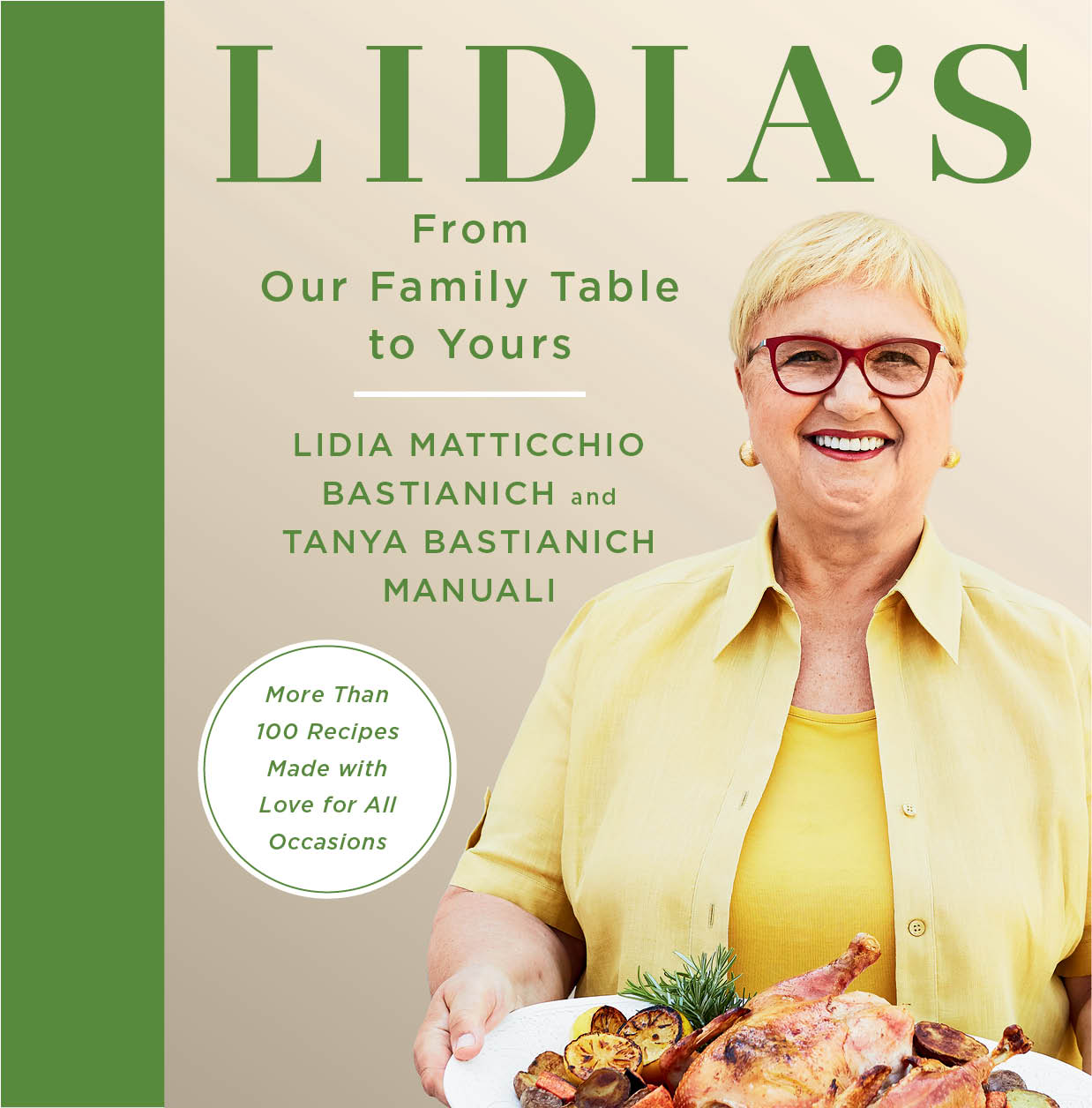makes 1 pound pasta dough
Notes
This is the dough I make at home. Simple to prepare and easy to roll out, it keeps well for 2 days tightly wrapped in the refrigerator and 2 months in the freezer. I make all different shapes of pasta with this dough; fettuccine, tagliatelle, quadrucci for soup, and pappardelle, garganelli (fuzi), maltagliati (pasutice). Often, in my nonna Rosa’s kitchen, all the leftover pasta dough was rolled out and cut into varying shapes to be used for soup; we had a potpourri of pasta shapes, and not one little corner of the dough went to waste. Here are instructions on how to cut some of the shapes that are used in some of the recipes in this book, plus a filled pasta you can serve in chicken broth or the Mixed Meat Broth.
Making fresh pasta is a beautiful way to connect with the family, especially children when they are small and are happy to get their hands in the dough. I recall that my mother, Erminia, would always ask Joe and Tanya to help her when they were little, and she would tell them stories of her childhood as they kneaded the dough. These stories remained
with them, and they passed on their love of pasta making to all five of my grandchildren. Now these children are away at college, and Nonna Mima, as they endearingly called her, is no longer with us, but I get Zoom calls for quick recipes they can make at school, and orders for what they want to eat when they come home from college. Pasta fresca is always on the list.
Ingredients
- 2 cups all-purpose flour, plus more as needed
- 2 large eggs
- 3 tablespoons extra-virgin olive oil
- 1/4 cup ice water, plus more as needed
Directions
Put the flour in a food processor, and pulse to aerate. Combine the eggs, olive oil, and ice water in a spouted measuring cup, and beat with a fork to combine.
With the processor running, add the egg mixture through the feed tube until a dough begins to form around the blade. Process until the dough is soft and springy and forms a loose ball around the blade. (If the dough is too loose to form a ball, add a tablespoon or two more flour; if it is too crumbly, add a little more water.) Turn the dough onto a floured countertop, and knead a few times to bring it together into a ball.
Wrap in plastic wrap and let it rest for 30 minutes at room temperature. Cut the rested dough into four pieces. Roll one piece through a pasta machine on the widest setting to stretch it, fold like a letter, and feed the side of the folded dough where the two ends meet through the machine again. Repeat once more, same as before, to smooth out the dough and create an even rectangle. Repeat with the remaining pieces of dough. Switch to the next-lower setting, and roll each piece through only once. Continue to take the machine down a setting (or two, if the dough rolls through too easily; it depends on your machine) and roll the pieces through until you have four thin pieces about the width of your pasta machine. Cut each piece in half crosswise to get eight pieces.
FOR PAPPARDELLE: Roll the floured pieces up lengthwise, like a cigar, and cut them into 1-inch ribbons. Gently twirl them, and form into loose nests on a floured baking sheet.
FOR TAGLIATELLE: Roll as for pappardelle, but cut into 1/2-inch ribbons.
FOR QUADRUCCI: Make tagliatelle, and then cut crosswise into little squares; use in soups.
FOR PASUTICE: Cut the eight pieces lengthwise into three strips each. Cut across the ribbons on the diagonal at 2-inch intervals to make diamonds. Toss the pasutice with abundant flour, and lay them in a single layer on a floured baking sheet. Cover with a dishcloth, flour the cloth, and layer more pasutice as needed.
FOR FUZI: Make the pasutice diamonds. Starting at one corner of each diamond, roll the piece of dough diagonally around a floured chopstick (or something similar, like a thin-handled wooden spoon the thickness of a large straw) and overlap the ends to make a tube. Press on the overlapping ends to seal, and slide the dough off the chopstick. Spread on a floured baking sheet. (Use two baking sheets, if needed; don’t stack these or you’ll crush them.)
FOR ANOLINI: Mix 11/2 cups fresh ricotta, 1 egg yolk, 1/3 cup freshly grated Grana Padano, 2 tablespoons chopped parsley, and a pinch of salt in a bowl. Roll the pasta into sheets, as described opposite, but don’t cut the sheets in half. Use a 1-inch round cutter to mark as many rounds as possible in half of the sheets, not cutting all the way through the dough. Dollop about 1/2 teaspoon ricotta filling in each of the circles, and wet the edges with your finger dipped in water. Lay the remaining sheets over the top to cover the filling, gently draping and stretching to cover all of the mounds of filling. Use the cutter to cut through both pieces of dough for all of the mounds. Pull away any excess pasta to separate the individual anolini. Press the edges of the circles together to seal, and dust them with flour. Place them on floured baking sheets.

